Effects of an arboreal ant on Brazilian arthropod diversity
A recent study “Territory and trophic cascading effects of the ant Azteca chartifex (Hymenoptera: Formicidae) in a tropical canopy” was published by Soares et al.* in Myrmecological News. The research was performed in Rio Doce State Park, a tropical forest in Brazil. The authors evaluated the trophic cascading effect caused by the arboreal ant species A. chartifex Forel, 1896 on arthropod diversity (species richness, abundance, and composition) of other predators (i.e., spiders, some beetles, mantis, and other ants, excluding A. chartifex as it was the factor to be tested) and chewing herbivores. In addition, the authors analyzed the effect of the presence of A. chartifex on leaf herbivory levels in a tropical forest canopy associated with the dominant tree species Byrsonima sericea (Malpighiaceae). The presence of A. chartifex corresponded to lower species richness and abundance of other predators and reduced chewing herbivores abundance. The results suggest that A. chartifex may be capable of modifying the arthropod species composition and have important top-down effects on the community structure of arthropods on B. sericea. Here, the first author Glória Ramos Soares and the second author Giselle Martins Lourenço highlight the main points and share some pictures.
Soares et al.* = Glória Ramos Soares, Giselle Martins Lourenço, Fernanda Vieira da Costa, Isabella Lopes, Breno Henrique Felisberto, Victor Diniz Pinto, Ricardo Ildelfonso Campos and Sérvio Pontes Ribeiro
A Photoblog by Glória Ramos Soares and Giselle Martins Lourenço
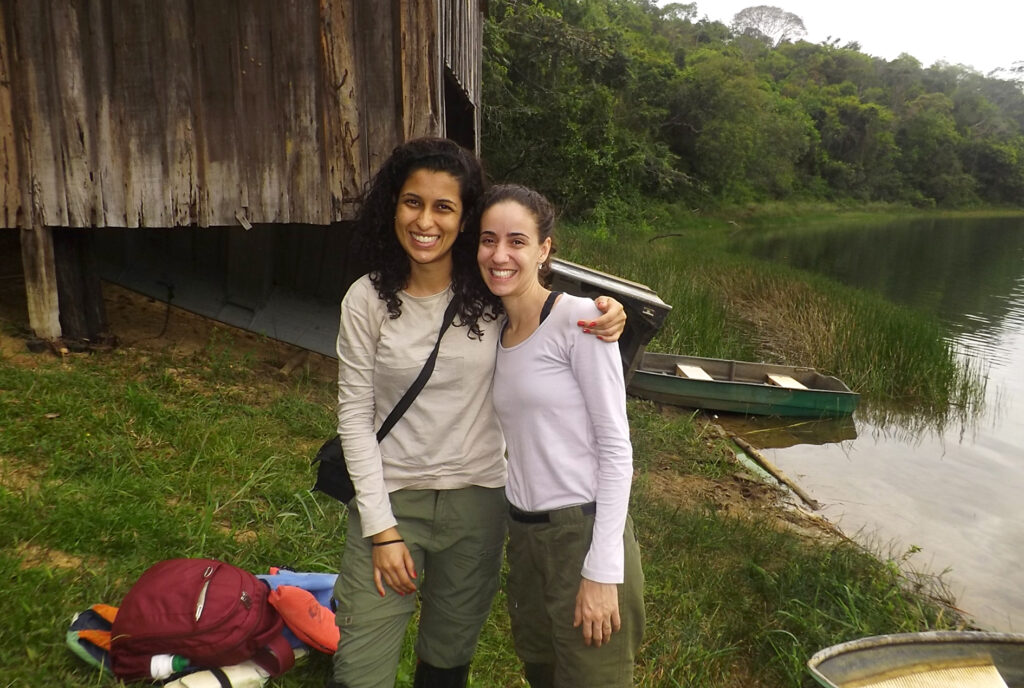
Glória Ramos Soares is a PhD in Ecology and developed this research in the Rio Doce State Park (Minas Gerais State, southeastern Brazil) during her doctoral program at the Federal University of Viçosa, with her thesis supervisors Sérvio Pontes Ribeiro and Ricardo Ildefonso Campos, and with other collaborators, such as her friend Giselle Martins Lourenço (PhD in Ecology, University of Campinas).
The Rio Doce State Park covers an area of approximately 36,000 ha of semideciduous Atlantic Forest, varying from 200 to 500 m above sea level, and is part of the largest natural Neotropical lake system. The lake system inside the park supports very particular ecotonal areas that are characterized by natural forest-lake transitions, where the trees grow branches bent towards the water as they seek light. This results in what has been called “brought low canopy”, which is, strictly speaking, a typical canopy habitat resting close to the ground, on the shore, or over the lakes.

It took long walks, boat crossings, and a lot of field help from laboratory colleagues, such as undergraduate and postgraduate students, to reach the study areas within the Rio Doce State Park (Fig. 1-3). Trees of B. sericea were sampled and divided into two categories: i) Azteca chartifex present – trees that were naturally colonized by this ant; and ii) A. chartifex absent – trees that, according to the records of the present research group, had no A. chartifex nests for at least a decade. The arthropods were collected via a beating technique using entomological adapted umbrellas by performing ten beats on at least three branches, and the leaves were collected to estimate herbivory levels with the guidance of a wire-framed cube positioned at three distinct locations inside the tree crowns (Fig. 4-5).
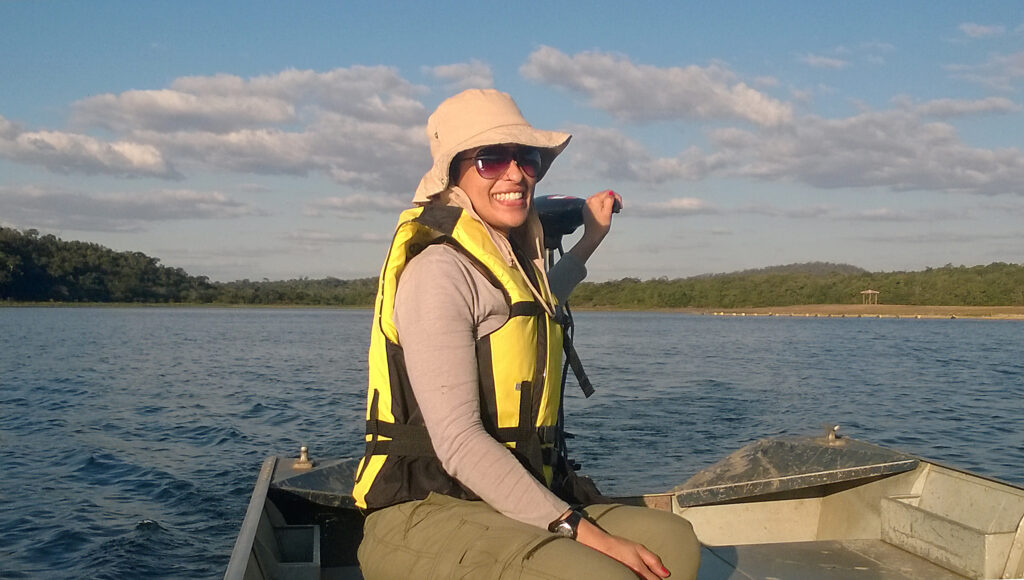

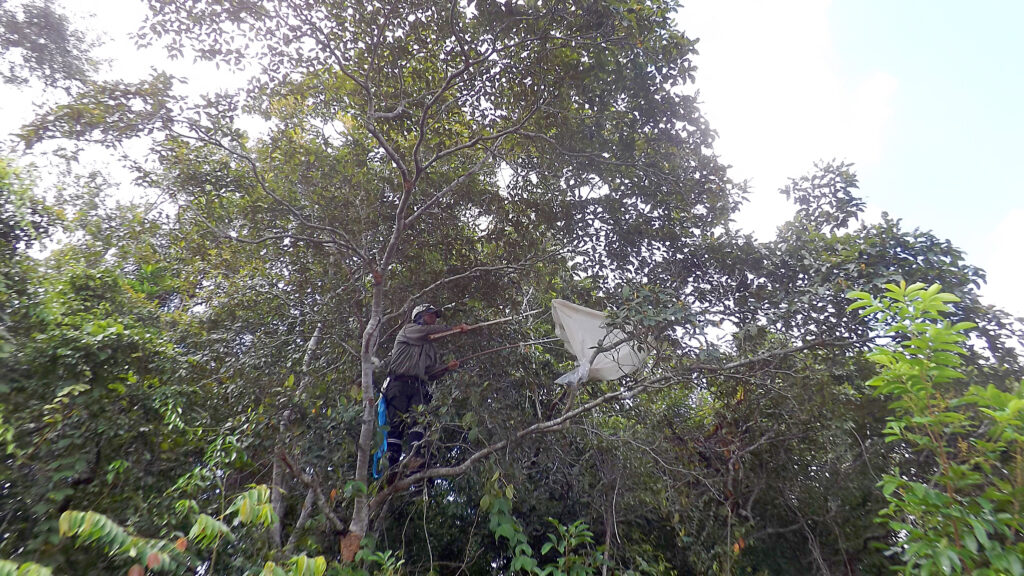
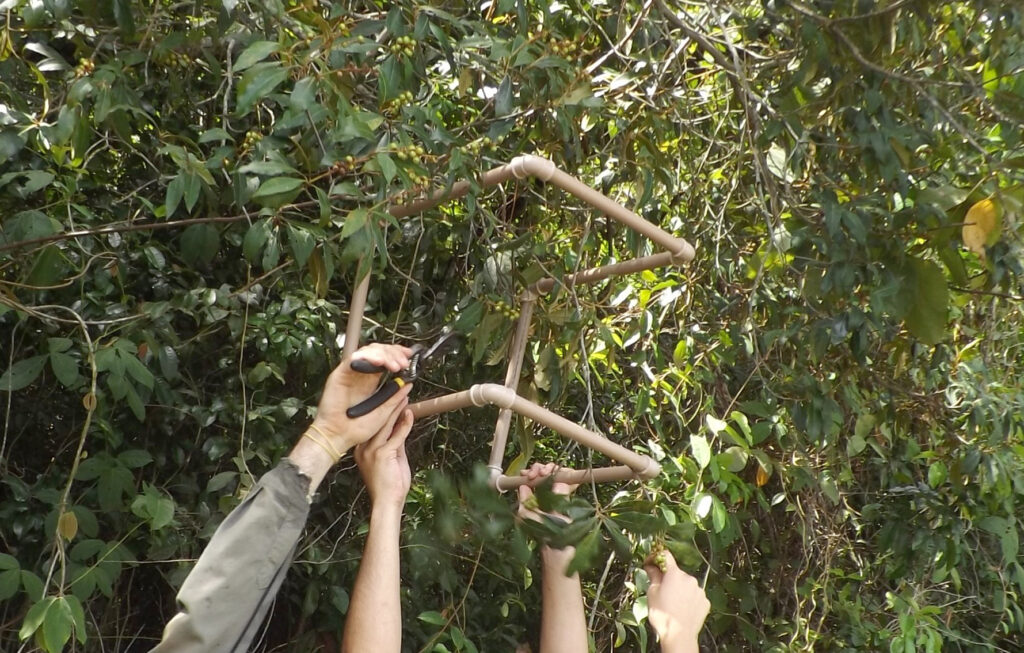
Azteca chartifex, the focus species of this study, is a polydomic species (i.e., multiple nests per colony) from a strictly Neotropical group of arboreal ants. These ants build their nests using cellulose and processed fibers, which protect their colonies that may contain thousands of individuals (Fig. 6). This ant species preys upon living insects that cause damage to the plant and has a potential mutualistic association with B. sericea trees. The main nest is established on the principal tree trunk (i.e., its main stem) and numerous smaller satellite nests are found along the branches of the same tree and on secondary branches of surrounding B. sericea individuals. In the Rio Doce State Park, we observed that when A. chartifex is present, B. sericea trees within its territory are constantly patrolled by a large number of A. chartifex workers.
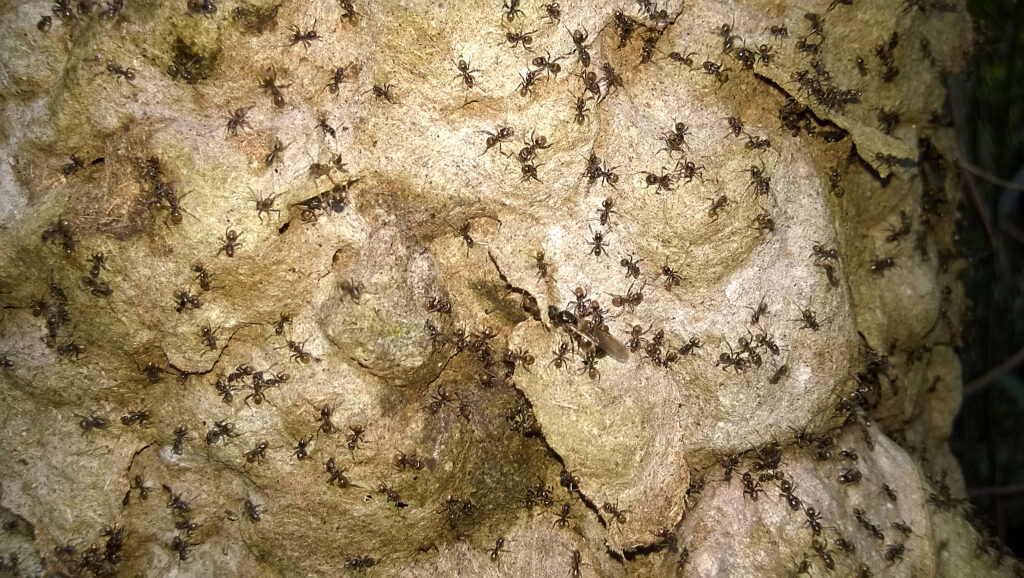
The presence of A. chartifex corresponded to lower species richness and abundance of other predators and reduced chewing herbivore abundance. The results suggest that A. chartifex may be capable of modifying the arthropod species composition and have important top-down effects on the community structure of arthropods in B. sericea. Our results increase the understanding of how top-down cascading effects influence the community structure of forest canopies. Thus, we reveal important implications for how canopy communities are assembled and maintained over time.
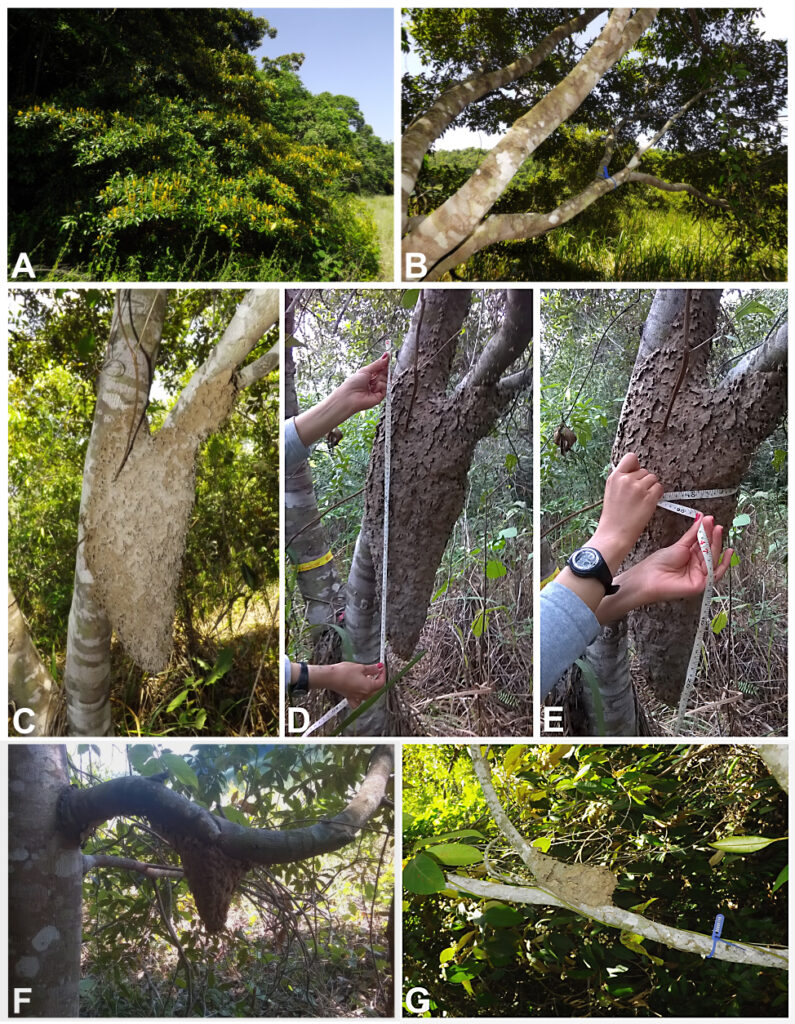




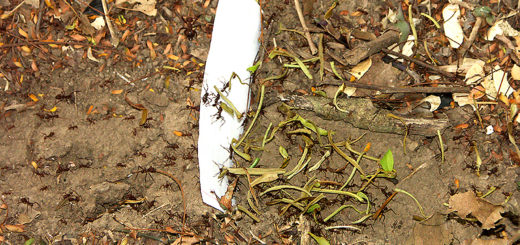
Recent Comments